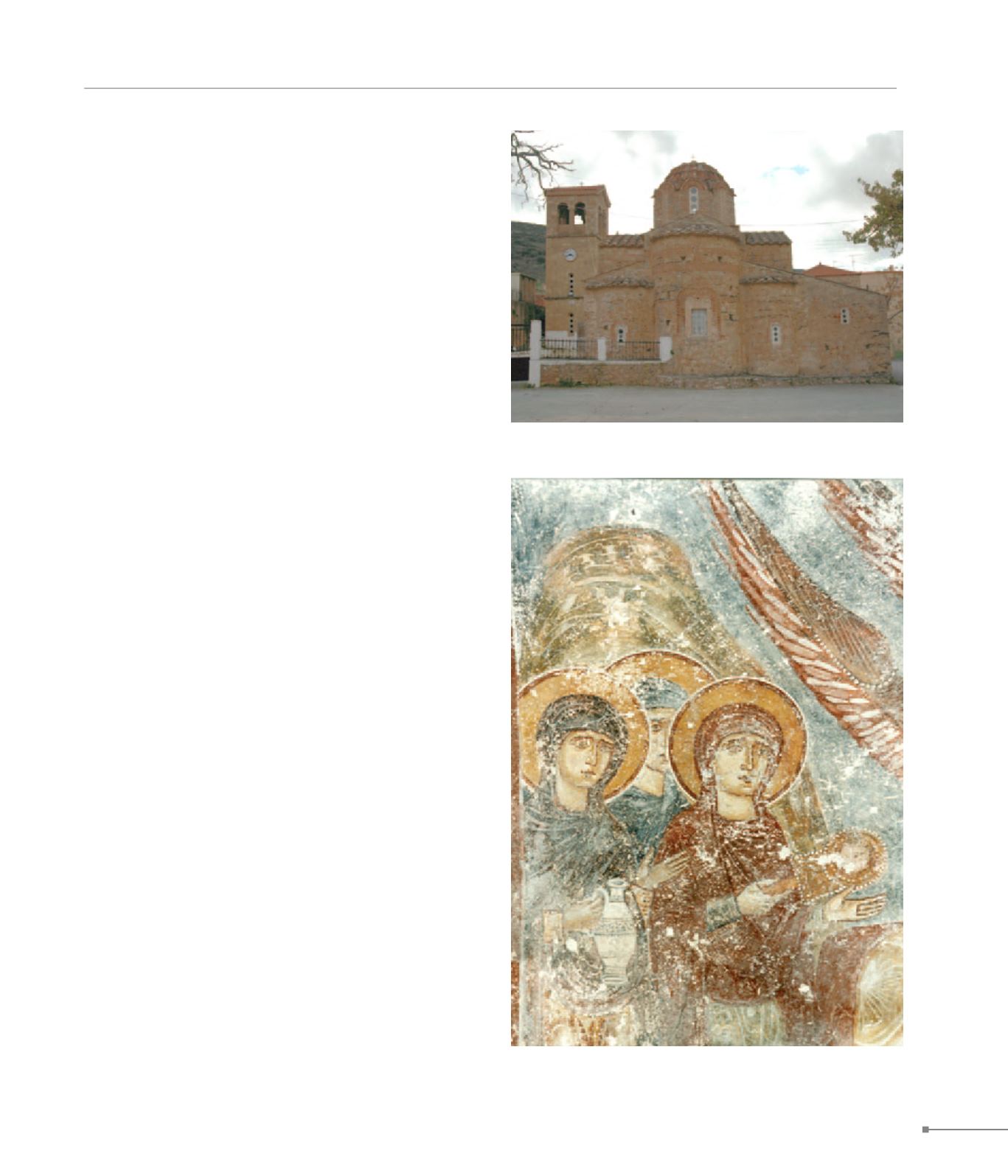
Aghia Paraskevi.
Aghios Nikolaos.
PELOPONNESE
225
305. Aghios Nikolaos, Ai Strategos, mural painting (Άγιος Νικόλαος, Άι-
Στράτηγος, τοιχογραφία)
305. Aghios Nikolaos, church of Aghios Nikolaos (Άγιος Νικόλαος, ο
ομώνυμος ναός)
of defensive walls at a lower level. The inner wall complements
the natural fortification of the rock and surrounds the upper
town, while the outer wall protects the lower town. The original
fortification phase dates to the Byzantine period; significant
alterations took place during Venetian and Ottoman rule.
In the upper town there survives the impressive, complex,
domed octagon church of Aghia Sophia, constructed in 1150
and identified with the Panagia Hodegetria church, known
only from sources; it retains sculpted and wall decoration
of the 12th c. In the first period of Turkish rule (1540-1690)
Aghia Sophia was converted into a mosque with mihrab and
minaret. In the second period of Venetian rule (1690-1715),
the church was the catholicon of a Roman Catholic convent
and a two-storeyed exonarthex was added. During the second
Turkish rule (1715-1821) the church operated as a mosque.
In addition, there survive the ruins of a three-aisled, possibly
Byzantine, basilica and an aisleless, barrel-vaulted church.
In the lower town, the Post-Byzantine church of Christ
Helkomenos, from which originates the renowned Crucifix-
ion icon (today in the Athens Byzantine Museum), was prob-
ably built above an Early Christian basilica. In the 11th-12th
c. the chapel of Saint John was constructed in the S of the
church. The aisleless Byzantine church of Saint Andrew was
repaired during the second Venetian rule (1690-1715) and re-
tains fragments of wall-paintings dating from circa 1300. The
ruined, barrel-vaulted, single-nave church of Aghia Paraskevi
is identified – according to tradition – with the royal chapel
of Andronicus II Palaeologus. Of similar type are the ruined
churches of Aghios Vasileios (?), Spyridon, and Athanasios,
and of Evangelistria, plus an unnamed church built on a 12th
c. predecessor with marble inlays on the floor and marble al-
tar screen (exhibited at the archaeological museum). Some
more churches that have been transformed have a Byzantine
phase. Ruins of Byzantine churches are also found outside
the walls, past Gefyra village: at the Askitaria site, W of the vil-
lage, with remains of 13th c. wall paintings; at the Panagitsa
site, the cave hermitage at Eftapaides; at the Samaraki site,
the churches of Aghios Gregorios and Prophet Elias.
304.
Aghia Paraskevi.
A ruined, aisleless church of Ai Zosimos survives.
305.
Aghios Nikolaos.
The cathedral of Saint Nicholas (11th c.) at Aghios Nikolaos vil-
lage is a distyle, cross-in-square church with wall-paintings of the
second half of the 13th c. The two-storeyed, barrel-vaulted, sin-
gle-nave funerary church of Ai Strategos features wall-paintings
and a built altar screen of the second half of the 13th c.


